If you have never heard of the Kingdom of eSwatini, the fact that it means 'land of the Swazis' will give you a strong clue: until April 2018, when King Mswati III decreed the name change, the country was known as Swaziland. The Mkhaya reserve is one of its three Big Game Parks:
We were fortunate to be able to spend a couple of days there recently. Mkhaya (and eSwatini more generally) is at the forefront of efforts to save rhinos from the threat of extinction and our experience, illustrated in the photo above, bears witness to the success of their breeding programme. The rhino viewing opportunities here are truly unparalleled.
However, the reserve has plenty more to offer. The next three shots show some examples: hippos, a nyala antelope, and a crested guinea fowl, respectively.
Guinea fowl (in sizeable numbers) and antelopes are permanent residents at Stone Camp, the only accommodation in the reserve. You can come to Mkhaya as a day-visitor, but most people stay overnight. Advance reservations are required in both cases. The reserve offers guided bush walks as well as game drives and these are an ideal way of exploring the wildlife.
There are no lions at Mkhaya, but there are other animals here which are best viewed from a safe distance. Black rhinos are one example. In contrast to white ones – such as the two in the photo at the top – they are easily provoked into a full-scale attack.
I took this photo of a black rhino on foot, crouching behind some trees, but our guide had positioned his vehicle just behind us, so that we had an escape route if one was needed.
In the shot below one of the guides is using a termite hill as a vantage point for spotting giraffes.
Remarkably, we found some within only a few minutes.
Mkhaya depends solely on visitors for its funds. It provides jobs for the local community, which is not only a good thing in itself, but probably also aids the reserve's anti-poaching efforts. Rhino horns sadly are still being regarded as a key ingredient for some obscure Asian 'medicines', despite being exactly the same material as human nails. (Maybe there are marketing opportunities in the Far East for quality toe-nail clippings – you might make a fortune.)

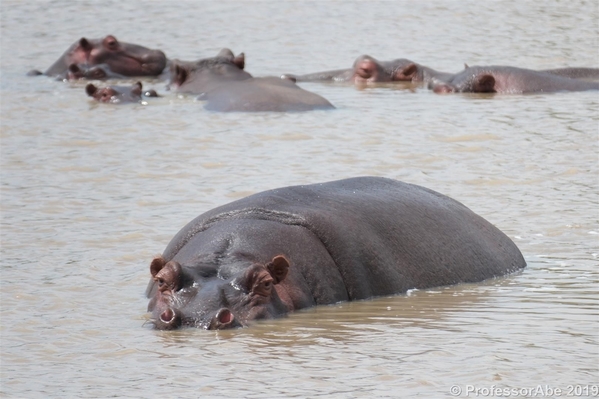
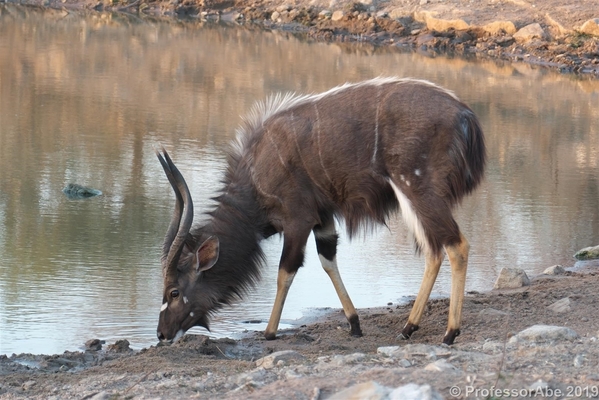
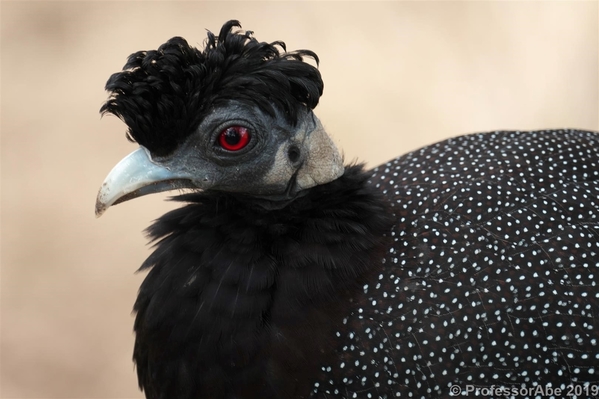
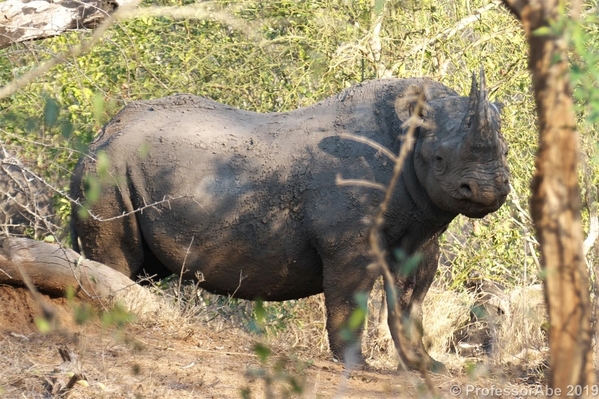
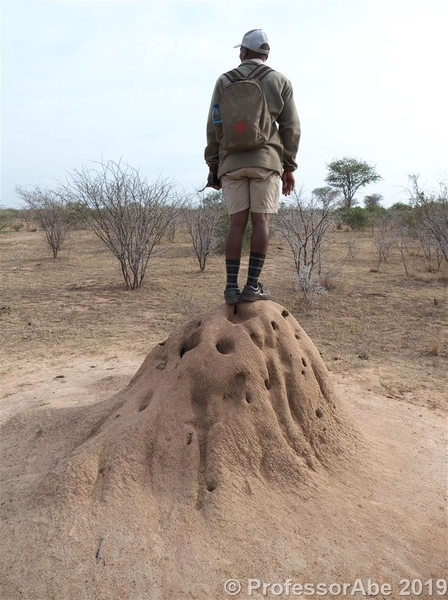
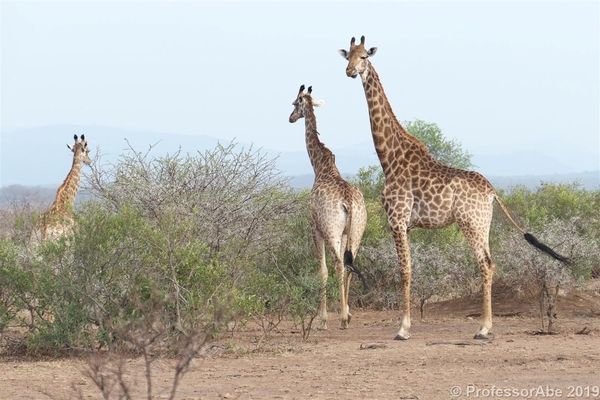
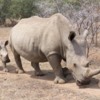






Comments (2)